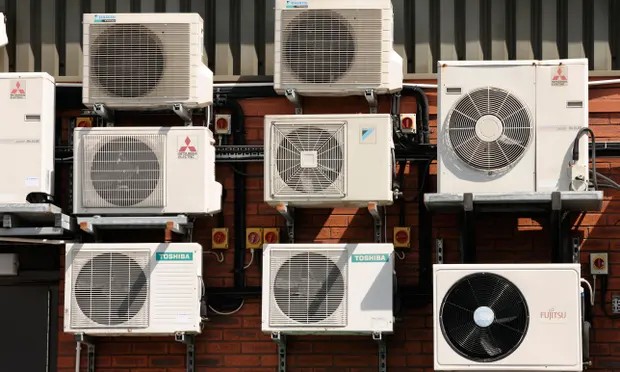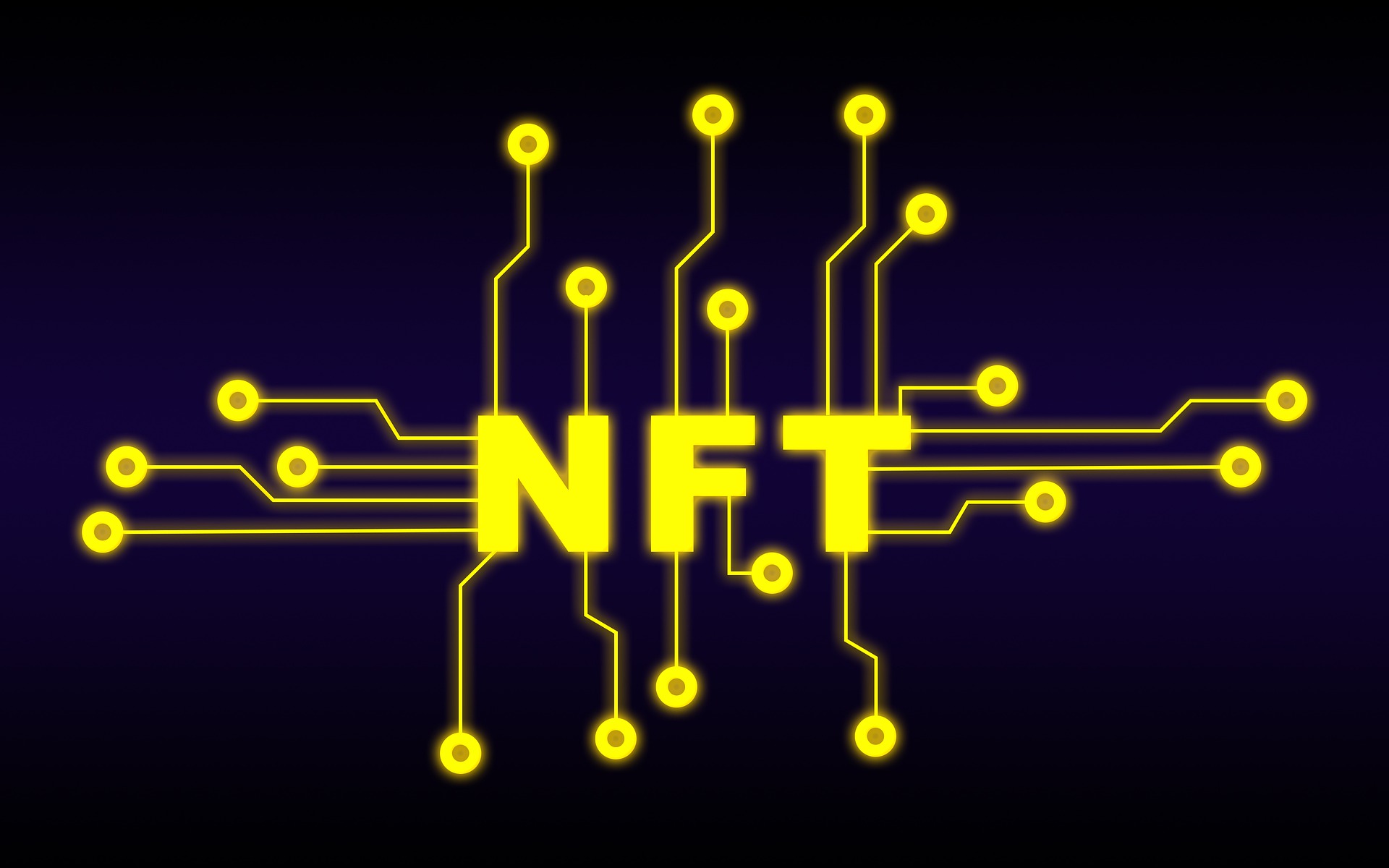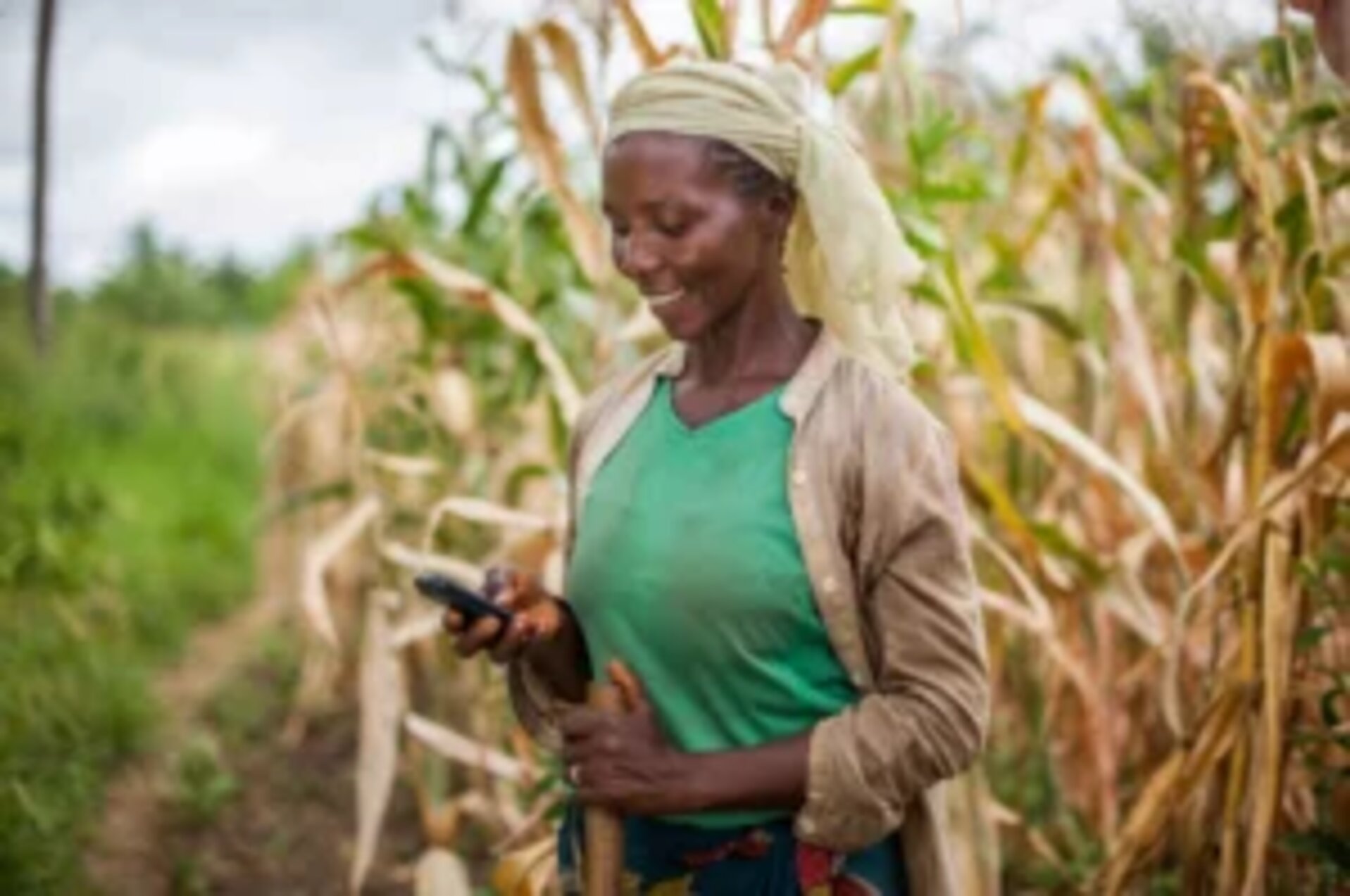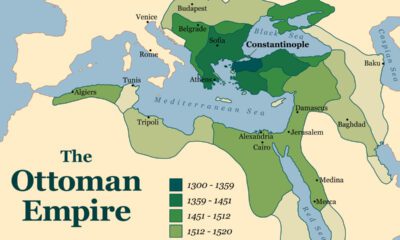Technology
Top 5 Weather API
Published
3 years agoon
By
Editor

Most of us wake up with curiosity to find out what the weather will be like every day. You probably don’t want to get overdressed when the weather will be sunny and vice versa. Thanks to the weather APIs that enable you to view updated forecast and weather alerts on your smartphone before leaving your home!
Weather affects almost every area of our lives. Everything, ranging from the food we eat, the air we breathe, is impacted by the weather. We, therefore, love watching weather news and even subscribing to weather updates give that rain, snow, or even fog could affect your commuting to work or stop you from flying or travelling to different parts of the world.
Today, you should be grateful to technology for implementing satellites, radar, remote sensors, weather updates, and other monitoring technologies such as weather APIs. Now you have a better understanding of weather within and outside your region.
Weather APIs refer to Application programming interfaces that help you connect to a broader database of the weather forecast and historical information.
Having done conclusive research, we came up with top-five weather APIs:
- Weatherapi.com
- WorldWeather online.com
- Climately.com
- OpenWeatherMap
- Clima Cell
This article explains and analyses the top five weather APIs that you could use to determine whether the pattern and access mobile weather applications as below.
First, we educate you on How to use Weather APIs.
It is not as complicated as it may sound. To get started with these Weather APIs, you need to sign up for a free account on RapidAPI. Secondly, navigate to any APIs and test out the endpoints in your preference’s programming language.
How do you choose the Best Weather API?
As a developer, you will access over 20,000 APIs for free; however, you can choose the best API by matching them with your objectives, preferences, and business scope, as well as your budget.
Responsiveness and Reliability
Weather APIs have proven to be reliable. As a developer, you need one that makes your tasks faster. You can identify whether API offers you reliability by turning it into a production version of your application and try them. The good news is that most of the Weather APIs offer a free trial option once you sign in or a free subscription, enabling you to determine the APIs cost.
Pricing
After identifying your ultimate goal, potential weather APIs, and their response and reliability, the weather API cost is the last thing you want to look at. What determines the Weather APIs cost is their features, capacity, responsiveness and reliability, and speed. However, it is worth noting that the most expensive will turn into a big expense when the number of API requests from your app is too many.
- Weatherapi.com
This is the ultimate weather and geolocation designed by developers for developers. It is popular and entrusted by over 15k global users. This API also offers you a free weather API and Geolocation. It provides you as the user, both forecasted and historical weather information. You can be able to access near real-time weather updates for millions of locations globally. Besides, you also get historical and future weather updates. Weather API.com gives you the 14-day hour-by-hour weather forecast and hourly historical weather information for several towns worldwide. The weatherAPI.com helps you look at the air quality data, the time zone, astronomy details, IP lookup, sports API, map API, and Geo API. You can use weatherapi.com to access weather data for any given region of the world as long as you can access the city and town, its postal and ZIP code using the longitude and latitudes.


There is so much to benefit from as you use weatherapi.com.
- Accepted parameters – you need to enter your location’s ZIP code or the name of the city you are residing. The weather API will give you an accurate weather forecast according to the parameters.
- Performance – The weather data on weatherapi.com is processed and shown in the app quite fast.
- Weatherapi.com reduces your effort almost halfway by ensuring that you don’t spend your time working under bad weather conditions; instead, you will concentrate on other issues in your business and let the weather challenges be sorted out.
- The use of weatherapi.com is cost-effective as it saves you lots of money and enables you to manage your business well according to the weather patterns and conditions.
2. WorldWeatherOnline.com
Gone are the days when people relied on newscasts, especially weather news, to learn about weather updates. Today, through weather apps, one can easily predict the coming day’s weather. The worldweatheronline app is making things easier for you as it shapes everything from global enterprises’ logistics to emergency aid charities strategies through weather updates.
World weather online shows you the current extreme weather conditions across the world. We cover about 4 million cities globally, and the API is a trusted and used API across the world. Examples of corporate clients who use this weather API are, skydive magazine, Weather care, and Sonitus systems, among many. For instance, when you check world weather online.com today, you will find that Texas is currently experiencing an extremely cold winter storm that occurred in the past weeks. Besides, from the word, you learn about weather updates from different parts of the world.
To get any weather for any part of the world, all you need to do is click on the map location and get the weather for any location. For instance, when you click on the weather for the week in Roberton, United Kingdom, WorldWeatherOnline.com shows you the maximum temperature of the location the following day as well as the minimum temperature. It also shows future weather. For instance, the windiest of all days will be a Thursday.


It is the most up-to-date weather forecast information and interactive map dedicated to providing global weather forecast content for websites, enterprises, and the travel and tourism industry.
Suppose you are looking for details about the latest ski conditions, navigational information, holiday weather reports, or your day-to-day forecasting for your home town and city. In that case, World weather online provides you with an accurate, updated weather report. If you are a sports fanatic, we also show weather conditions like cricket, golf, and football tournaments worldwide.
3. Climately.com
This weather API offers you a real-time, 14-day weather forecast and historical weather. If you want to find out what the weather condition was like some 3 days ago or how it will look like in the coming ten days, Climately.com will sort you out.
Climately.com aims at offering you a dedicated global weather data with a CSV format data dump for 36,532 global regions. The data is up to date, actual, and fully controlled. The CSV data dump gives you real-time and up-to-date information on every 10-15 minutes and the weather forecast available for the next 14 days within an hourly intermission. Besides, if you could be wondering how the weather conditions were 10years ago, CSV provides you with historical weather data both in hourly and daily intervals.
This historical weather means that if you might be suspecting or someone told you that something happened or ruined an event because of the weather 10 years ago, you have a chance to prove by looking at climately.com. Climately.com is easy to use and implement. After implementing the API, you can access and download a complete weather dataset, whether it’s for the past or the coming days. Lastly, climately.com gives you a chance to download huge files of weather data.
4. OpenWeatherMap
It is a scientific yet simple technique to the weather forecast and is a mobile application that you can find on your smartphone. OpenWeatherMap will require you to turn on your location the moment you search the app. IT gives you an hourly focus and an 8-day forecast with minimum and maximum temperature.
It doesn’t matter where your current location is or where you are based. OpenWeatherMap provides historical, current, and forecasted information about weather data through light-speed APIs for every location across the world.
The weather data on the past provided by this weather API goes way back compared to Climately.com. OpenWeatherMap provides historical data of up to 40 years back. So, if a weather condition caused something before you were born or your child, they can get this information from this API.
Advances in technology and the acquisition of new machines will make it easier for you to access enhanced weather data in the historical weather database. The database gives you weather information for any coordinate as it has been extended to 40 years.
You can log in to the OpenWeatherMap by signing up for free. Then call the API for paid subscriptions. All you need is the API key to call weather API. You will then get an API key in the API call to give you API recommendations whenever your account exceeds a limit of calls.
5. ClimaCell
Climacell is an American-based weather technology API that repurposes wireless communication networks for advanced weather forecasting. This weather app delivers real-time forecasts to vital industries such as municipalities, sports, and the transport industry.
ClimaCell operates with weather intelligence to give you the right information, generate invaluable insights and drive actions. It provides both short-term and long-term forecasting together with recent historical data and mobile access.
If you are a business person, Clima cell will give you the needed weather alerts and dedicated support on monitoring and insights of weather updates. The dynamic, actionable alerts help to streamline communication with smart and dynamic alerts, ensuring that you get the right weather notifications or updates at the right intervals. Clima cell displays more than 30 different weather and air quality parameters. Its also an interactive map view that enables you as a user to visualize and track whether through color-coded layers besides its short and long-term timelines.
The predictive insights dashboard found in Clima cell will help you as a business person to see how the weather will affect your business in the coming 6 days. This makes you optimize operational plans in advance. Based on your decision and logic, Clima cells automatically produce business insights and action plans standardized to the ever-changing minute-by-minute weather forecast.
You would want to listen to or read what Clima cell reports if you are always on the road or love sports and be guided on the weather conditions.
Because most traditional weather forecasts heavily depend on government institutions or municipalities for public data, Clima cell uses the best technology through their propriety representations and existing wireless communication infrastructure and IoT devices to collect weather data. Therefore, if you work in the aviation sector, are an engineer on a construction site, an insurance advisor, a sports personality, or enjoy outdoor events, Clima Cell comes in handy to ensure you are knowledgeable about the weather.
ClimaCell’s data study and imaging service give users access to forecast updates and local weather maps. The explanation may enable farmers, businesses, and governments to make knowledgeable choices.
What are the Benefits of using the Top Five Weather APIs?
You do not want the weather conditions to ruin your day or business. There is so much to gain from using the weather APIs. Using the weather API helps you promptly monitor the weather information, predict the most appropriate time for land irrigation, and prevent any profit losses to your business.
These top five weather APIs analyzed above have changed the way we live:
- People are now more organized than in the past. Because of accurate weather updates, the aviation industry pilots can know when to fly and know when it’s risky. Business people know when to travel or harvest their produce, all with the aid of the weather forecast.
- People have become globally connected on social media through weather updates. For instance, worldweatheronline.com helps people from different parts of the world connect, even vulnerable societies. You probably heard of the Arab spring that came to the world’s attention through this connection.
- Today’s tasks are undertaken more easily and faster compared to the past. Weather applications have undeniably changed the way we shop, bank, or even pay our bills. By receiving the updates, you can choose to pay bills online and shop online, all made possible through smart technology, enabling weather updates like WeatherAPI.com.
Following this discussion on the top five weather APIs, we can sum it up by stating that the historical weather updates could be communicating to developers that the coming days can be anything but foreseeable. The weather APIs have shown dependability and accuracy, and the historical weather data tells developers that this information could be the basis of future generations. As a business person, a tourist, or an individual leading a normal life in your city, weather APIs provide you with the best and actual weather updates and data.
You may like
Climate Change
Air Conditioners Exacerbate Climate Injustice
Published
2 years agoon
October 11, 2022By
Arif Jamal

Air conditioners are the epitome of inequality and climate injustice.
Buying air conditioners is one of the most popular individual responses to climate change. As the temperature of the globe increases, most people are buying and using air conditioners to protect themselves from the scorching heat. As of 2020, there were 1.9 billion air conditioning units in the world. By 2050, the number of air conditioners is expected to grow to 4.5 billion. That means every 2 people out of 7 are using air conditioning. Further, 37% of all the world’s electricity is used for air conditioning.
At an individual level, air conditioning seem good to protect oneself from the sweltering heat. However, the use of air conditioners possesses two inherent problems- (i) They only worsen climate change and (ii) the access to air conditioning is inequitable.
How do Air Conditioners Contribute to Global Warming?
Air conditioning is a trap- the warmer it gets, the more air conditioners we use. The more we use air conditioners, the warmer it gets. It is an irony that the technology we need to stay cooler only makes the climate hotter.
Air conditioners use refrigerants that also happen to be powerful heat-trapping gases. Hydrofluorocarbons (HFCs), the chemicals used in air conditioners are 12,000 times more potent at trapping heat in the atmosphere than carbon dioxide.
According to the calculations of the World Economic Forum, greenhouse gas emissions from air conditioning will account for as much as a 0.5-degree Celsius rise in global temperatures by the end of the century.
Also Read: Pakistan’s Climate Crisis: A Peek Into The Apocalyptic Future That Awaits
Unequal Access to Air Conditioners
As of now, people have mostly focused on the technological aspect of air conditioners. Various countries have started funding initiatives to upgrade air conditioners. They aim to replace HFCs with harmless chemicals.
The problem of unequal access to air conditioners is mostly disregarded.
It is perhaps because almost all elites possess an air conditioner. Further, lower-class people who cannot afford an air conditioner right now desire one. In this race for buying air conditioners, no one is asking the right questions.
Given that air conditioners contribute towards global warming through the release of HFCs and consumption of huge energy, why should only some people be allowed to have air conditioners?
The harmful effects of air conditioning on climate are socialized. However, the benefits are not socialized.
Also Read: Climate Refugees: Pain of Unseen Victims
We are not in this Together
When it comes to climate change, it is often repeated that we are all in this together. However, nothing is farther from the truth. The rich people who afford air conditioning make life terrible for others who cannot afford an air conditioning. Further, they totally insulate themselves from the harm of the air conditioners.
The case of air conditioning makes any kind of technological progress to protect humankind from climate change look bleak. If there is technological progress, it appears that it may be private. Like air conditioning, technology may not be a public good.
When Jeff Bezos returned from space last year, he made it very clear that elites will not reduce their carbon footprint. He instead suggested moving the heavy industry into space. He said, “We need to take all heavy industry, all polluting industry, and move it into space. And keep Earth as this beautiful gem of a planet that it is. That’s going to take decades to achieve, but you have to start. And big things start with small steps.”
Bezos is the owner of one of the most polluting companies in the world. Instead of switching to green energy, he is talking about taking polluting industries to space.
It may, in fact, be possible for Bezos to start his life in space permanently. He may be able to give his future generations a better climate up in space. Unfortunately, he will take this step only after he has done damage maximum to the earth, to an extent that life may not be possible here.
That is exactly what air conditioning is- make life terrible for others but also make technological progress to insulate yourself from the harmful effects inflicted on others.
Also Read: Climate Change Deepening Gender Inequalities: A Reality Check
The Way Forward
Before taking any step towards mitigating climate change or making any technological progress to protect humankind from the effects of climate change, it must be kept in mind that climate change affects different classes of society differently.
Any future technology that is not public good should be rejected by the people. Although air conditioners are now beyond the stage where they could be regulated but governments must ensure that air conditioners are taxed heavily. The revenue thus generated can be channeled for green energy initiatives.
Featured
Are NFTs Killing our Planet? The Darkside of NFT Explained
Published
2 years agoon
June 14, 2022

NFTs have exploded in popularity since the beginning of 2020. With the astounding rise in sales by 1,700% between December 2020 and February 2021, the newest tech sensations have led many artists to earn millions over the auction of a single picture.
However, there is a dark side to these digital assets. NFTs may be the future of digital art – but they are putting our planet’s future in grave danger.
So, what are NFTs? Are they bad for the environment? What makes them so dangerous for the planet? And, is there a future for green NFTs?
What are NFTs?
NFTs are being heralded as the next big thing in the high-growth crypto investing world. These tokens, which are seen as the digital equivalent of collectibles, have already attracted millions of dollars in investments in a range of NFTs and NFT-related enterprises.
But, what exactly is NFT?
The idea of cryptocurrency is that each unit of the currency is interchangeable. They are all identical and worth the same amount; therefore, they are known as a fungible tokens. NFTs, on the other hand, are Non-Fungible Tokens.
An NFT is an information stored on a ledger maintained by a distributed network. However, each NFT is different from one another; therefore, not interchangeable.
:format(webp):no_upscale()/cdn.vox-cdn.com/uploads/chorus_asset/file/22341219/Screen_Shot_2021_03_02_at_3.39.12_PM.png)
:format(webp):no_upscale()/cdn.vox-cdn.com/uploads/chorus_asset/file/22341219/Screen_Shot_2021_03_02_at_3.39.12_PM.png)
NFTs (non-fungible tokens) are gaining traction in the digital world, and they may take the shape of artwork, music, metaverse real estate, and even selfies. They provide new ways for artists to profit from their work, as well as a means for purchasers to support creators while also gaining the bragging rights of having exclusive content. However, they have faced criticism for their environmental impact.
But, what makes NFTs bad for the environment?
Are NFTs Bad News For The Environment?
Yes, NFTs have a devastating impact on the planet. And one of the primary perpetrators behind NFT’s environmental impact is mining. Mining is a procedure that uses enormous processing power and energy to solve complicated mathematical problems to ‘mint’ an NFT on the blockchain and hand over the ownership to the buyer.
Ethereum, an open-source blockchain, is the most popular marketplace for NFTs. To construct these digital assets, Ethereum employs a purposeful inefficient ‘Proof of work‘ (PoW) approach.
Powerful computers can try an infinite number of new block creations each second. And the first miner to find the solution is rewarded with their unique assets, which are then added to the blockchain.
However, the puzzle becomes even more complex as more money fuels the NFT industry and more computers join the race to solve the problems. To stay competitive, miners constantly need to upgrade to higher computing power, large warehouses, and more powerful cooling systems. Thus boosting the carbon footprint.
Take, for example, ‘Space Cat,‘ a GIF NFT of a cat traveling to the moon in a rocket. According to Crypto Art, the Space Cat’s carbon footprint is the same as an EU resident’s electrical usage for two months.
“Take “Space Cat,” an NFT that’s basically a GIF of a cat in a rocket heading to the Moon. Space Cat’s carbon footprint is equivalent to an EU resident’s electricity usage for two months, according to the website cryptoart wtf.”https://t.co/QyVpNNxmXD
— tariq panja (@tariqpanja) November 28, 2021
Finding the Worst Offender of Carbon Footprint
Given a sequence of steps involved and little to no research in determining the emission during each stage; finding out the actual carbon footprint of each NFT is challenging.
However, we know that Ethereum is one of the most carbon-intensive NFT platforms. Thus any digital asset purchased through it would have a significant carbon footprint.
Unfortunately, most NFTs today are stored in the Ethereum blockchain that operates on a proof-of-work (PoW) model. Digital Artist Akten examined the carbon emission of 18,000 NFTs and discovered that an average digital asset uses energy equivalent to a month’s worth of power consumed by an EU resident.
The PoW system of Ethereum consumes over 31 terawatt-hours (TWh) of power every year, an approximate equivalent to the annual energy usage of Nigeria.
“Since NFTs are getting mainstream, more people are transacting on Ethereum. As long as proof-of-work still exists in that chain, the environmental impact is still high,”
Angeline Viray, a trader and investor in NFTs and cryptocurrencies
Is Proof of Stake (PoS) Model the Way to Green NFTs?
Thre are two widely used blockchain consensus for cryptocurrency and NFT that ensures the legitimacy of the transaction on the network:
- Proof of Work (PoW)
- Proof of Stake (PoS)
While most networks today operate on a power-intensive PoW model where miners are rewarded for solving a combination of ‘digital locks,’ PoS might be the future of green NFT and the crypto industry.
PoS is when a validator (a person in charge of validating a transaction on a blockchain) holds a portion of their crypto holdings as collateral (stake). The system periodically awards one of the validators with the ability to produce the next ‘block’ in the blockchain.
However, there are still a lot of hurdles for PoS to become the primary consensus tool of the blockchain networks.
For one thing, shifting to the PoS model while maintaining functionality is quite challenging for blockchain. Furthermore, because specific systems favor validators willing to gamble the largest amount of stake on the line, the process may drift towards centralization (opposite to the core of blockchain tech, i.e., decentralization). Moreover, the consensus is yet to prove its security as PoW already has.
Ethereum, on the other hand, claims to have made progress toward a proof-of-stake paradigm. According to Tim Beiko, the coordinator for Ethereum’s protocol developers, the ultimate transition will minimize Ethereum’s environmental effect by 99 percent.
NFT Industry Towards a Cleaner Future
The energy consumed in generating and operating NFT platforms is enough to power large countries like Argentina and Nigeria. But should this really be prioritized when so many people worldwide still lack access to dependable power while many are already suffering from the consequences of climate change?
However, the bright side is that the crypto and NFT industries are now marching toward a more environment-friendly future. Furthermore, there does seem to be a push in the crypto industry for more sustainability. Therefore, from the current trajectory, we can expect to see an increase in renewable energy and a steep reduction in emissions in the near future.
Africa
Digital Agriculture to Fight Poverty in Africa
Published
2 years agoon
May 28, 2022By
Nazmeen

Pandemic like COVID-19 and Russia-Ukraine war shows the vulnerability and dependency of poor countries for food security. One in every five people in Africa is facing hunger. In the African continent, 283 million people are fighting hunger. In such a scenario digital agriculture can pave the way for food security and reduction in poverty.
Read More: Impact of Technology on Human Rights
Conditions are particularly worsening for East African countries like Sudan, Somalia, Ethiopia, Kenya and Uganda witnessing extreme hunger and poverty due to armed conflicts, weather conditions, drought and global food inflation and supply chain disruption due to the Ukrainian war crisis. African people are on the verge of dying from the shortage of food and nutrition.
Also Read: Human Rights on the Brink of Tragedy Due to a Severe Drought in the Horn of Africa
World Bank Groups developed a COVID-19 Household Monitoring Dashboard for measuring the impact of COVID-19 on smallholders of around 83 poor and developing countries. According to such surveys, 80% of households reported a decline in their income due to COVID-19 impacts. In Ghana, 76% of families whose main source of income was agriculture reported a decline in their income.
Agriculture contributes 23% of African countries’ GDP and is one of the major sectors of the economy. Around 60% of working population in Africa works in agricultural fields. That’s the reason why agricultural failure leads to more than 12 million children being severely malnourished due to food insecurity and 33 million people are at the gate of starvation due to food shortages.
Hence, the development of the agricultural sector can help African nations to see prosperity and become food secure. Further, it can help the rising population growth and reduce the burden of shortage of arable land in future.
Most farmers in Africa explained challenges regarding lack of information and access to markets and logistics, need for money, inputs, agronomic advice, and transportation facilities.
In such a situation, there seems a hope in digital agriculture, which is the combination of agriculture and technology. Technology can help farmers to become resilient to unseen and random shocks like the Covid-19 pandemic.
Digital agriculture is the flawless integration of digital technologies with livestock and agriculture management and other agricultural processes.
Various technological tools and techniques are used to collect and analyse data for predictive agriculture. Farmers can have fast, accurate and efficient decision making.
Technologies that are commonly used in digital agriculture are sensors, UAVs, communication networks, cloud computing, data analysis, artificial intelligence and machine learning and other advanced machinery and tools.
Food and Agriculture Organisation of the United Nations (FAO) mentioned benefits that can help small farmers are access to data, information, market, reduced operational costs, enhanced production and better supply chain management.
The younger generation especially wants to go for digital agriculture but they are unable due to a lack of training and funds.
Hence, Governments can provide finance, develop knowledge dissemination centres and provide skills to the larger population to adopt digit solutions for agriculture.
Governments and people need to realise the immense potential of digital agriculture for the development of the African region and its people.
Opportunities for Agricultural Revolution
Digital agriculture has multiple benefits throughout the agricultural food chain as documented in a report, “Digital Technologies in Agriculture and Rural Areas“, released by FAO.
- Management of resources can be highly optimised with high anticipation, traceability, and accuracy.
- Data and information can be readily available to the small farmers that will help them in the decision-making process.
- Real-time decisions can be made for the care and utilisation of agricultural inputs like fertilisers, seeds, water and manure according to the exact need and climatic conditions. It will reduce the wastage of resources and make the agriculture output less costly. Farmers can avail themselves more market price.
- Fields, crops and animals can be tracked at the farm level.
- The health of livestock can be tracked on a real-time basis with health devices attached to them. So that required care is given to them on time.
- Digital agriculture helps in developing agricultural systems that are highly predictable and productive and adaptive to climatic conditions.
- There are benefits to a clean environment and climate change as resource optimization would lead to less resource burden and wastage.
- People can reap social and cultural benefits as well with improved communication, development, peace and prosperity.
- Overall farmers can achieve success in higher food security, sustainable livelihood and overall improvement in living standards.
Challenges to adopting digitalization
There is no denying that digital agriculture can change the landscape of the African economy. But it is also true that it would need dramatic changes in farming systems, communities’ mindsets, rural ways of doing agriculture, and resource management. This would definitely be a challenge and requires systematic and holistic efforts from the top to down level. International Organizations like FAO, UNO, and World Bank Group, national Governments, domestic NGOs, knowledge centres, research groups, universities and farmers at large need to be adaptive and supportive. They need active collaboration and communication to make things a reality.
Also Read: The African Great Green Wall
Funds, knowledge creation and dissemination, and skills development are the important milestones to look after.
Conditions for implementing digital agriculture systems
Following are the bare minimum conditions that can be fulfilled to transform the agricultural sector towards more efficient and productive farming systems through digitalisation.
- Development of basic ICT infrastructure.
- Provide education in ICT.
- Government policies and plans to support digital strategies and e-programs.
- Spread the use of mobile, internet and social media.
- Make the farmers aware of agriculture entrepreneurship and digital innovation.
- Establish partnerships between agriculture research scientists working in labs to the farmers at the agricultural grounds. So that farmers can take knowledge and help from the scientific knowledge and skills while scientists can get the real time and behavioural data and feedback directly from the grounds to direct research more towards the local needs of the farmers.
- Government can establish incubators and accelerators programmes to impart skills to the farmers to better utilise digital technologies at the farms.
- Further, the government can provide easy access to equity funds and loans to the farmers.
Key Takeaways
Successful introduction and implementation of digital technologies in the agriculture sector depends on government support to provide enabling social, economic and policy infrastructure to fully develop the digital agricultural ecosystem in the countries. As technology makes changes with high disruptions, it takes time for society and economic systems to adopt changes and hence they change progressively. Hence, a balance can be created by the government to make an environment for the uptake and effective utilisation of digital agriculture.
Trending
-



 Featured9 months ago
Featured9 months agoWorld passively watching as Israel perpetrates open-ended massacre in Gaza
-



 Featured10 months ago
Featured10 months agoIsrael is Hiding Crucial Demographic Facts About Palestinians
-



 Featured2 years ago
Featured2 years agoArgentina wins the World Cup; are there any other winners?
-



 Featured4 years ago
Featured4 years ago“Do Not Waste Water Even If You Were at a Running Stream” Prophet Muhammad
-



 Featured3 years ago
Featured3 years agoHistory of the Ottoman Empire
-



 Featured10 months ago
Featured10 months agoMuhammed: The Greatest Man to walk on Earth
-



 Featured2 years ago
Featured2 years agoChristian militia infiltrate Lebanon
-



 Featured4 years ago
Featured4 years agoFriendship is a Way For Jannah
